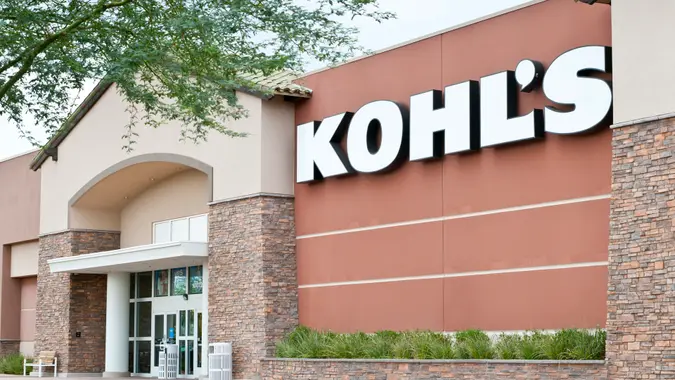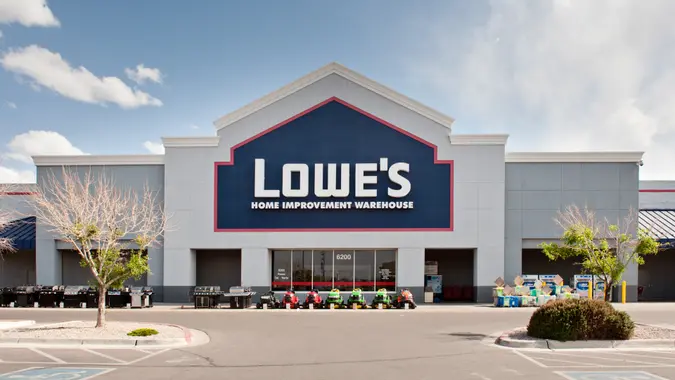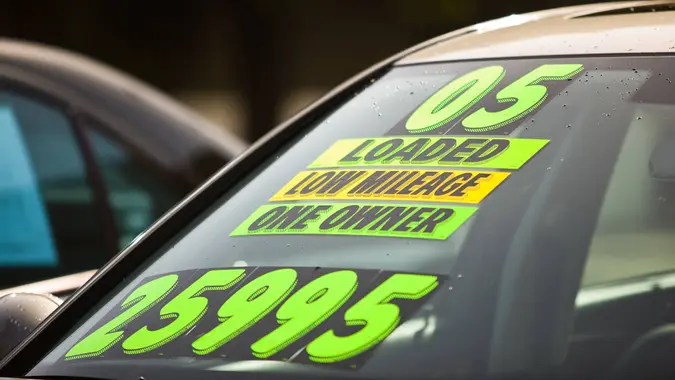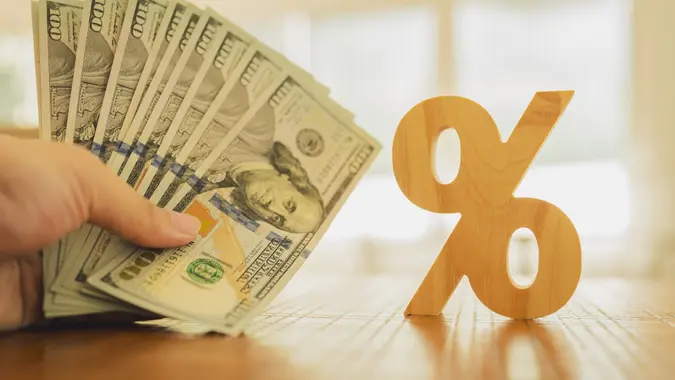What Gas Prices Could Look Like in 2025 If Harris Wins
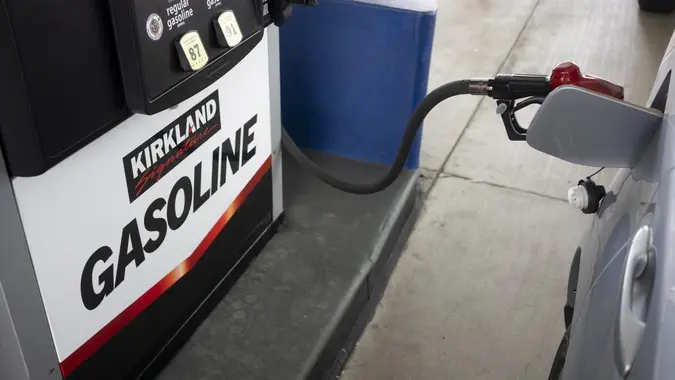
Commitment to Our Readers
GOBankingRates' editorial team is committed to bringing you unbiased reviews and information. We use data-driven methodologies to evaluate financial products and services - our reviews and ratings are not influenced by advertisers. You can read more about our editorial guidelines and our products and services review methodology.

20 Years
Helping You Live Richer

Reviewed
by Experts

Trusted by
Millions of Readers
The cost of gasoline has gone up over the past 30 or so years, with only a few instances of it dropping in price. Currently, the national cost of regular gasoline is $3.47 on average, according to the AAA. Midgrade gasoline goes for $3.92, while premium is $4.27 on average.
With the presidential election coming up, you may be wondering what gas prices will look like going forward if Kamala Harris wins. While the president doesn’t have as much of a direct impact on gas prices, Harris’s policies and potential changes to existing legislation could influence how much you pay at the pump. But be aware that other factors also play a role in how much gasoline actually costs.
Here’s what you need to know about the price of gasoline and how it might change going forward.
Supply Could Become Limited
When it comes to gas prices, supply and demand play a crucial role. The greater the supply, the lower the costs — generally speaking. When supply is limited and demand is high, prices tend to rise.
Chuck Warren, a political economist and host of the Breaking Battlegrounds politics podcast, predicts that a Harris administration could ultimately lead to a reduction in supply as she focuses instead on renewable energy. According to Warren, Harris has advocated for green energy quite a bit and could incentivize using renewable sources of energy over fossil fuels.
Moreover, Harris has previously focused on climate change initiatives that could contribute to more investment in renewable energy sources.
“If Kamala Harris wins the election, we can expect her administration to continue focusing on climate change initiatives and renewable energy investments,” said Dennis Shirshikov, a finance professor at City University of New York (CUNY) and head of growth at GoSummer.com. “This could lead to policies that might restrict oil drilling and production on federal lands and waters, similar to the Biden administration’s policies.”
If this occurs, domestic oil production could start to decline. This would limit the current supply — aside from imported oil — and potentially lead to higher gas prices.
Short-Term Impact on Gas Prices
Gas prices fluctuate all the time, rising and falling on a daily or weekly basis. Given this, it might be best to view the presidential election’s impact on gas prices in the short term first.
In the short term, Warren predicts that prices will increase — but only slightly. “[This is] due to tighter regulation concerning oil drilling as well as production along with probable carbon taxes,” he said.
Carbon taxes are a specific type of tax levied on the carbon emissions that come from manufacturing services and goods — like gas. The purpose of this tax is to reduce greenhouse gas emissions, something that’s usually done by raising the price of fossil fuels.
The possible restrictions on oil drilling and production could further limit supply and increase costs. After all, if it becomes harder to produce gasoline, it’ll become more of a commodity.
A recent World Oil article indicated that Kamala Harris could ban fracking. This practice entails blasting massive volumes of water mixed with sand and chemicals into the earth to fracture rock formations, thereby releasing natural gas and oil. It’s generally considered harmful for the environment, but can increase the availability of crude oils, which are used in the production of fuel.
If fracking is banned, it could cut production by as much as 25%. That’s a massive reduction and could result in much more limited supply and — again — higher prices.
Long-Term Impact on Gas Prices
Historically speaking, the U.S. president has only ever had a minor long-term impact on the price of gasoline.
There is the possibility that demand will fall, something that could cause gas prices to even out. This would likely occur if electric-powered vehicles become more accessible to the average consumer, thus leading to more people opting for EVs versus their gas-powered counterparts.
Warren substantiated this idea by indicating that Harris could prioritize alternative energy over fossil fuels. This would cut down on how much people — and the automotive industry — rely on fossil fuels. And it would either stabilize or even lower gas prices as a whole. It just might take some time.
EIA’s Predictions on Gas Prices
In July 2024, the U.S. Energy Information Administration (EIA) released a short-term energy outlook report predicting that regular-grade gasoline will cost around $3.50 per gallon by 2025. This is only slightly higher than the current average cost of regular-grade gas in the United States, which tends to fluctuate anyway.
Editor’s note on election coverage: GOBankingRates is nonpartisan and strives to cover all aspects of the economy objectively and present balanced reports on politically focused finance stories. For more coverage on this topic, please check out What Gas Prices Could Look Like in 2025 If Trump Wins.
 Written by
Written by  Edited by
Edited by 



